IOR takes part in innovative project for real-time Covid-19 testing device
Institutional Communication Service
SARS-CoV-2 virus analysis involves complex procedures and requires long waiting times. The MicroCoVSens project - which sees the collaboration between EPFL, Department of Innovative Technologies at SUPSI, and IOR (affiliated to USI) - aims at the realisation of a portable device for real-time virus testing. A concrete and easy to implement solution that will allow to limit the spread of the virus through rapid and effective diagnoses that can be carried out even by non-specialised personnel. The project has received funding for over 1M Swiss francs granted by the Swiss National Science Foundation (SNFS), within the NRP 78 “Covid-19” programme.
Following the growing global outbreak of the Covid-19 pandemic, the scientific world has mobilised to rapidly produce solutions to reduce contagion and contain the spread of the novel coronavirus. Current techniques used for diagnosis include isolation of the virus in cell culture, genomic detection through Ribonucleic acid (RNA) amplification and serological testing (antigen and antibody detection). Isolation of the virus was considered the gold standard for a long time; however, this is a long and laborious procedure and some viruses are difficult or impossible to grow. Moreover, viral culture requires trained personnel and laboratories able to work with highly pathogenic viruses, as well as sophisticated and expensive laboratory equipment. Current analysis methods imply a complex procedure, requiring hours for results, reagents and medical specialised personnel. The most relevant limit is related to the fact that this techniques are not deployable in airports, train stations, and ports, where the fast screening of travelling population would contribute to the early identification of potential vectors and would thus help in containing the disease propagation.
MicroCoVSens: an alternative solution
Considering the current situation and the consequent developments related to the global pandemic, the Department of Innovative Technologies of the University of Applied Sciences and Arts of Southern Switzerland (SUPSI), the Swiss Federal Institute of Technology in Lausanne (EPFL) and the Institute of Oncology Research (IOR, affiliated to USI Università della Svizzera italiana), have joined forces to develop a joint research project aimed at developing an innovative diagnostic solution.
The project “Development of a microfluidic platform for real-time detection of SARS-CoV-2 virus based on multifunctional silica membrane biosensors” (MicroCoVSens), aims to realise a portable device for real-time detection of SARS-CoV-2 virus from untreated human samples through minimal reagents consumption, without preparation requirements, at hand of non-specialist personnel. The system will target viral RNA directly with an ultra-sensitive cheap biosensor made of porous silica (SiO2)-supported active sensing surfaces, aiming to reliably detect a minimum of 50 copies of viruses in 1 mL samples, in a handful of minutes.
The proposed procedure is based on a microfluidic circuit, which first extracts RNA from a saliva sample. The RNA then passes in the active zone of the device (coating), which presents some probes of complementary RNA: if present, the target sequence of viral RNA is trapped and identified through the measurement of the bioimpedance of the surface. The overall procedure should take approximately 10 minutes.
This is an innovative and alternative diagnostic approach that aims to overcome the limitations of current testing procedures, eliminating the need to employ specialized biomedical personnel and laboratory facilities and reducing diagnostic time through a significant simplification of the procedure.
The project
Supported by the Swiss National Science Foundation (SNSF), within the NPR 78 “Covid-19” programme, with a grant of 1'098'174 Swiss francs, the project will start in October 2020 and is expected to devlop the device within two years. The reasearch group is formed by Sandrine Gerber (Adjunct Professor and ISIC Deputy Director at EPFL), Igor Stefanini (Senior researcher and Head of the Microtechnical precision systems research area at the Institute for Systems and Applied Electronics at SUPSI), and Francesco Bertoni (Group leader and Deputy director at the Institute of Oncology Research, and Adjunct professor at the USI Faculty of Biomedical Sciences). Several researchers, PhD and Master's students from the three research institutes will also take part to the project.
On the role of the IOR, Francesco Bertoni says, "our group studies lymphomas and the development of new medicines for patients with these cancers, however some of our expertise can be applied in other contexts. Therefore, it seemed appropriate to contribute for the part of bioinformatics and molecular biology in a project that aims at developing a new device capable of extracting nucleic acids from a biological sample and at the same time to demonstrate the presence of the virus responsible for COVID-19. We will be involved in the identification of the RNA sequences of SARS-CoV-2 on which to build the probes and in the construction of the microfluidics with regard to biological aspects such as the optimization of RNA extraction and the numerous experiments to calibrate and validate the system".
Potential impact and future emplyments
The development of a cheap deployable device for the real-time reliable detection of RNA pathogens will allow to limit the spread of current and future pandemics, reducing the spread of the virus and enabling better and more effective diagnostic action. The new device will further develop bio-sensors for real-time detection of future virus and will enable the simultaneous detection of multiple pathogens also for the diagnostics of other diseases.




